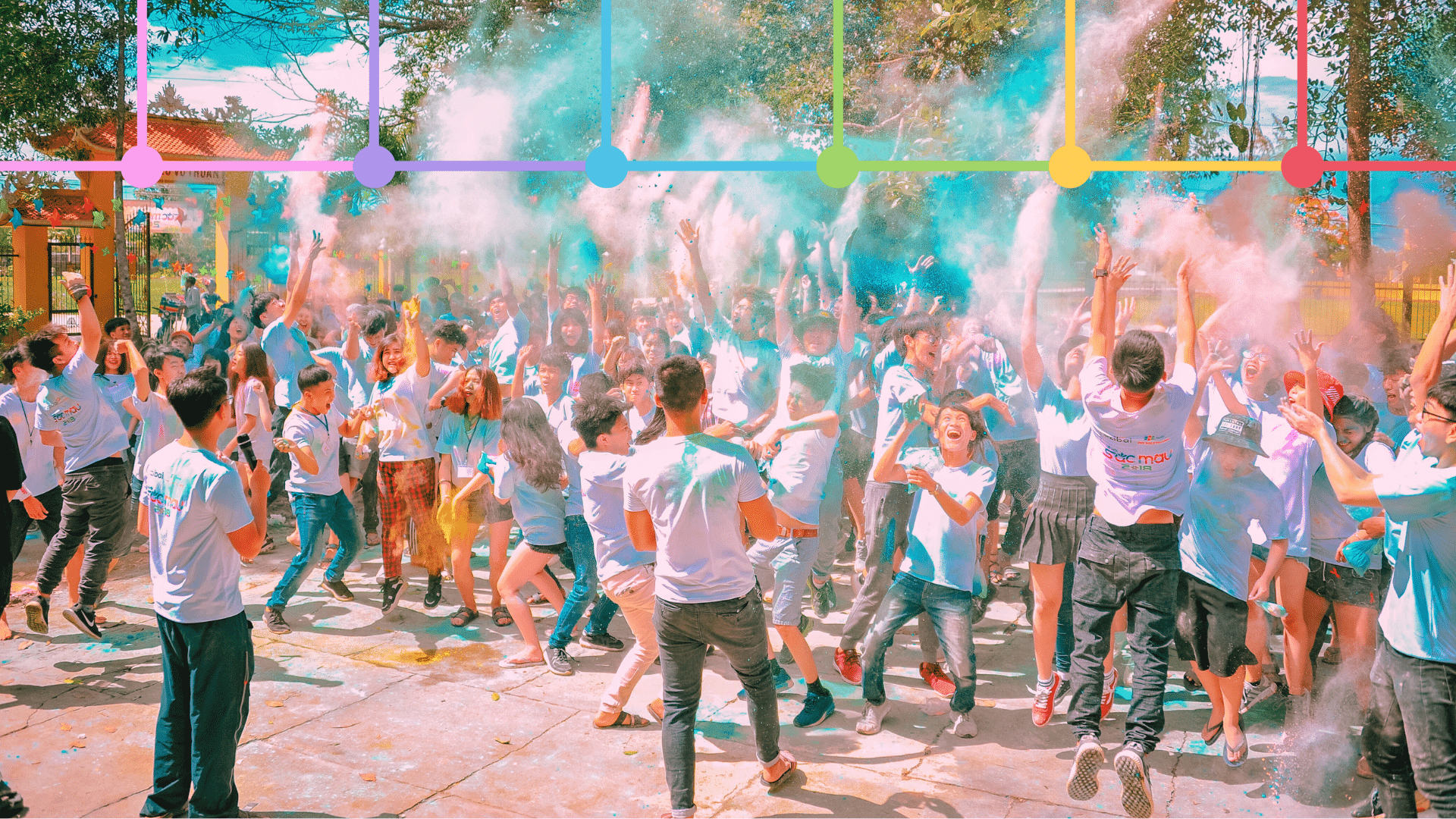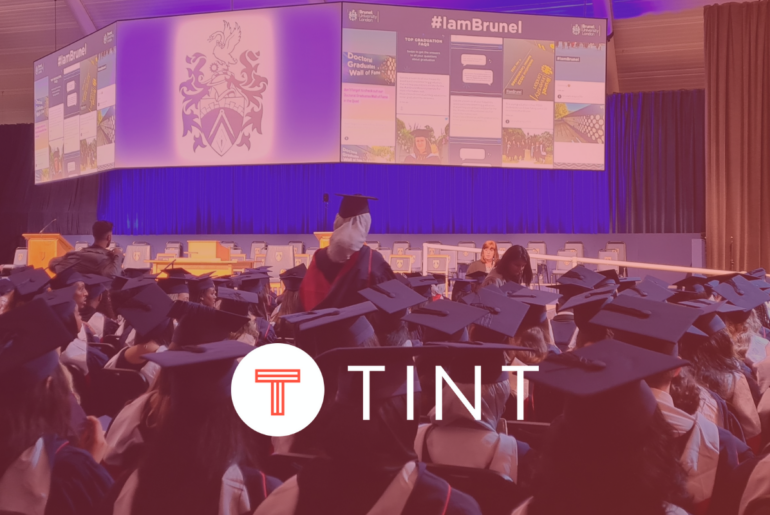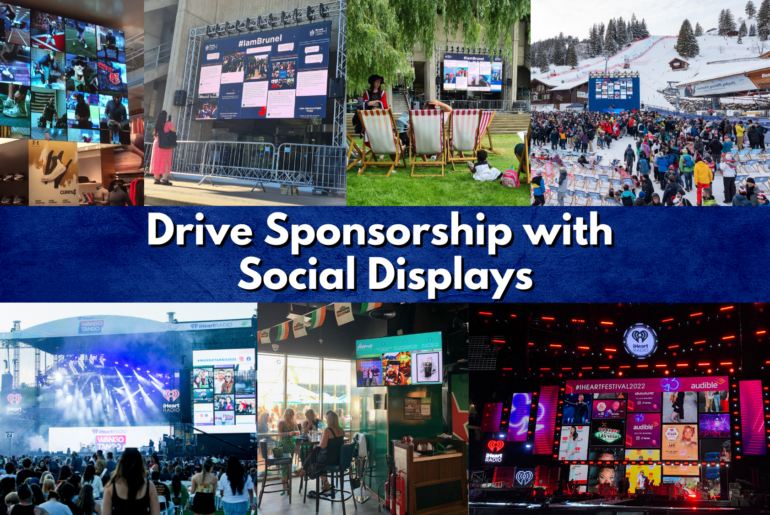Each year begins with our event technology and social trends to watch. This year, technology is driving most of the conversation. Events are implementing artificial intelligence, owned communities, and advanced placemaking techniques to give themselves a competitive edge. We’re tracking six 2024 event trends impacting B2B and B2C activations worldwide.
Artificial Intelligence
It should be no surprise that Artificial Intelligence is one of the top trends to watch in 2024. It has been a hot topic since ChatGPT went mainstream last year. Paul Roetzer of the Marketing AI Institute describes 2023 as the year organizations piloted AI for individual practice, but 2024 will be the year that organizations seek to implement business-wide AI policies and practices.
Many event organizations are still in the piloting stage. There are several likely reasons for the slower adoption of technology.
First, many organizations are still in some form of recovery from pandemic lockdowns. Their events may be back in full swing, but they may still be struggling to restore budgets, assets, and (most importantly) talented staffing. The lockdowns saw a slew of early retirements and experienced events professionals changing industries. Thankfully, the industry has stabilized. However, this reduction in professional tenure has put many organizations behind the curve on technology adoption.
Second, legacy events, particularly those put on by non-profits and municipalities, tend to adopt technology at a much slower pace. For-profit and smaller, agile event teams can quickly test new tools. Cities, non-profits, educational institutions, and large event organizations have inertia they must overcome to bring in new ideas or technologies. The piloting phase may only be starting for these groups, or they may need a longer runway to test before they can fully deploy a technology pilot.
Lastly, budgets are tighter than ever. The broader travel, tourism, hospitality, and events industry still faces significant spending volatility. This has led many industry leaders to clamp down and tighten budgets in case of a “true” recession or other form of economic downtown. This leaves little room for experimentation beyond the free or freemium AI tools available on the market. There will be more adoption as existing software solutions incorporate AI into their products since this will create access to the technology without requiring additional investment.
We’ll see event organizations using AI for a broad set of tasks as they overcome these challenges. Expect AI adoption to start with lower-hanging fruit like social media, marketing, and documentation. Those who have moved past initial piloting will soon use specialized tools for more exacting functions like risk management, volunteer management, operations, and emergency planning.
Next-Level Placemaking
We’ve been discussing placemaking since early 2020. Pre-pandemic, Placemaking as an experiential design strategy was taking root in mainstream practice. Now, in a post-lockdown world, Placemaking is more vital than ever, particularly when it is enabled by technology. Consumers have endless options for educational content, with most of it available without them leaving their homes. Events’ unique value is turning a space into a “place.”
2024 will see the three main principals of Placemaking continue to guide how experience designers create more memorable events. Spaces should be more than utilitarian. They should promote the event’s goals at every turn, using infrastructure and technology to balance business and social needs.
Under the placemaking umbrella are three concepts that will see particular focus:
Human-Centered Design
Events are only successful when they’re attended. The best practice is to start with an audience and attendee persona, then build for that person. Human-centered design (HCD) initially started as an industrial and product design philosophy, but it was quickly been adopted by event and hospitality professionals.
HCD requires every step of the event planning process to reflect on that ideal attendee and determine what is desirable, feasible, and viable. Every element, from large-scale art, food, stages, venues, and performers, should have a direct relationship and impact on the human experience of the event.
Constant Communication Loops
Attendee feedback is useful for improving future events, but why wait? Open, constant communication functions allow event organizers to make changes and remedy issues on the fly. This can be a daunting prospect for seasoned event professionals. But with more competition for attention and tighter consumer budgets, attendees may not give you a second chance to do right.
Events often have plans to escalate attendee complaints when they’re made to a volunteer or staff member. However, organizations should seek to capture feedback through social and digital channels and act upon it. Effective social listening is a low-friction place to start since many tools with a variety of functionalities exist across price points.
It isn’t enough to listen and take action; events must also respond. Attendees and stakeholders are likelier to provide specific, actionable feedback when they know it will be acted upon. Communication begets communication, and having a constant communication loop establishes a powerful sense of trust within the event.
Sustainable Practices
Event associations like MPI, PCMA, and IFEA have been spotlighting the importance of sustainability as an event management trend for years. Attendees want to see events reducing their carbon footprint and ecological impact. The casual attendee also understands what actions reduce impacts rather than performative efforts that don’t do much beyond being highly visible.
Things like using recycled materials, reducing waste, and removing wasteful practices like paper schedules are now the baseline. Attendees also want to know that technology used for presentations, like projectors and digital signage, is ethically used and disposed of to reduce the amount of e-waste heading to landfills.
Event technology firms are also exploring how to offset the carbon footprint of the servers used to keep their software running.
Smarter Event Logistics
Routing and Advancing are well-known processes in the music festival industry. Both focus on moving talent across distances in the fastest, most efficient way possible. The growing popularity of the roadshow event format, and similarly executed “conferences in a box”, can find efficiencies by implementing routing techniques. Moving materials between a home base and a sequence of venues can be incredibly expensive.
Event professionals and field marketers are now thinking about expedient ways to keep the wheels rolling on their mobile formats. Some may succeed with legacy or more traditional routing infrastructure like event warehousing or venue dryage services.
Software solutions, like Sendoso, are adding a layer of technology to make routing and warehousing easier to execute by subscribing to their subscription service.
Chatbots
Chatbots are nothing new, but with the launch of the GPT Store, highly responsive, high-quality conversational AI trained on your own data can quickly be launched with a few hours of planning and data enrichment. Well-designed chatbots could save time and staffing capacity across a variety of functions.
At the event, particularly large or widely distributed activations, many customer service elements such as help desks, registration, and information booths are outsourced to third-party staffing. The chatbot can be the event expert in everyone’s pocket, accessible by attendees, staff, vendors, and other event stakeholders. This increases the speed and accuracy of information distributed. It will also reduce the training or pre-work expectations on staff, allowing more time to be spent on important training like emergency response or critical systems.
As more integrations launch for the GPT Store, conversational AI chatbots will proliferate across other channels. With open APIs and an ecosystem of chatbot tools already in place, social media is a sensible next step. Verbal AI tools can allow different audiences to speak to a digital receptionist powered by these advanced chatbots.
Chatbots, AI-powered and otherwise, are primed to free up significant amounts of time for event professionals.
Creator Corps
We’ve been beating the drum of authenticity for over a decade, and we’re happy that it has become part of mainstream marketing practice. There was a strong separation between the types of externally created content in the past. Influencers of all sizes, Creators, UGC creators, community content, and organic UGC were essentially rivals for focus and budget.
Now, externally-created content has been brought together under the umbrella of the greater digital community. Job titles and roles have yet to be reorganized to reflect this, but we’re seeing movement in community and social media roles growing ever closer together.
Last year, we interviewed Cyle Perez, Director of Public Relations. He spoke about creating a “Creator Corps,” a hybrid community that would create opportunities for influencers and creators of all stripes. Similar experiments have been started across various hospitality, travel, and tourism brands. It is only a matter of time for events, particularly ongoing event series, to establish collective long-term digital creator partnerships.
Event Communities
Communities and events have a harmonious relationship. The best events have vibrant communities behind them, whether literal communities using events for quality of life or tourism or communities of practice that attend business events to grow as professionals. Communities are often deeply associated with their flagship events. People thinking of New York City may find some of the first mental touchpoints being the New Year’s Eve Ball Drop or Macy’s Thanksgiving Day Parade.
There are also micro-communities within the events themselves. Events require the contributions of sponsors, exhibitors, vendors, staff, volunteers, and external stakeholders. Many events have activated these internal communities using social platforms for over a decade. It isn’t uncommon for events to have dedicated private Facebook groups or discord servers for their various teams.
With the continued march of Gen Z into the workforce, older social platforms no longer provide the same common access. Organizations are finding that their Facebook groups are slowing in growth as younger professionals exit the platform or, quite simply, never have accounts to begin with.
There have been moves to bridge that gap in the business events world using communications platforms like Discord and Slack. But the synchronous nature of these platforms makes them less than ideal places. They are good forums for discussion, but not necessarily the dissemination of vital event information and perspective that has been achieved in the past by more traditional event communities on established platforms.
This has led forward thinkers to launch owned online communities, safe from the whims of social platforms and with the control of information and access firmly within the organization’s grasp. Expect those efforts to trickle down into more traditional consumer events after the wider adoption of platforms earlier in the year.
—
2024 will be a year of emerging technologies, AI disruption, and general volatility due to changing tides in socio-political landscapes. But one thing is certain: people still seek sincere, authentic connections with similarly-minded people and the brands they love.
Ready to talk event social AI, owned communities, or pilot event carbon offsets? Schedule time with our events experts today.




